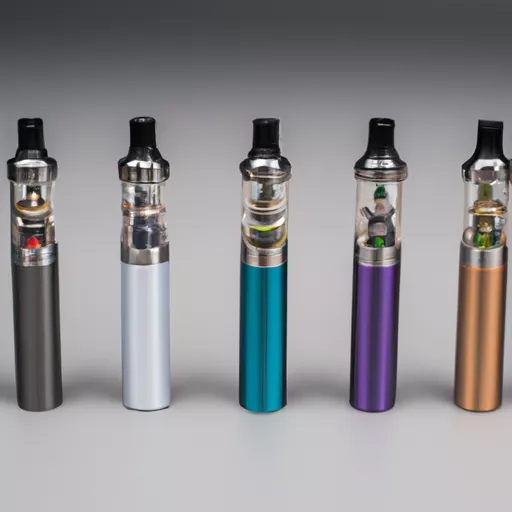
As a fellow vaper in Australia, I understand the struggle of using electronic cigarettes or vape in the land down under. The vaping industry in Australia has faced many challenges in recent years, with strict regulations and prohibitions placed on e-cigarettes. However, despite these challenges, vaping culture in Australia is still thriving. In this article, I will provide you with quality information about e-cigarettes in Australia, the current laws and regulations surrounding them, and the overall state of vaping in the country.
Before delving into the specifics, let’s start with the basics. Vaping is the act of inhaling and exhaling vapor produced by an electronic cigarette or a similar device. These devices work by heating a liquid solution, often referred to as e-liquid, which contains nicotine, flavorings, and other additives. This vapor is then inhaled by the user, mimicking the experience of smoking a traditional tobacco cigarette.
E-cigarettes in Australia have a controversial history, with the first legislation being introduced in 2008. The Therapeutic Goods Administration (TGA) classified nicotine as a Schedule 7 poison, making it illegal to sell or distribute nicotine-containing e-liquids within Australia. This classification has led to the Australian government being one of the strictest in the world when it comes to e-cigarettes.
As a result, the use, possession, and sale of nicotine-containing e-liquids are currently prohibited in Australia. This ban extends to all states and territories, with severe penalties for those who break the law. These penalties can range up to $45,000 for individuals and up to $450,000 for businesses. This strict stance on vaping has caused a booming black market for nicotine-based e-liquids, with vapers resorting to purchasing their supplies online from overseas or from illegal vendors within the country.
However, there is a way for vapers to legally access nicotine-containing e-liquids in Australia. The Personal Importation Scheme allows individuals to import up to three months’ supply of nicotine e-liquids for personal use. This scheme has been in place since 2015 and requires vapers to obtain a prescription from a registered medical practitioner. The process of obtaining a prescription can be tedious and expensive, with some doctors refusing to prescribe nicotine for vaping purposes.
The current regulations and prohibitions make it difficult for vapers in Australia to access quality e-liquids and devices. This has led to many vapers turning to homemade or DIY e-liquids, which are not subject to the same regulations and standards as commercial products. This can pose significant health risks, as homemade e-liquids may contain harmful ingredients or have incorrect nicotine concentrations.
Despite the strict regulations, the vaping community in Australia continues to grow. According to a survey by the Australian Bureau of Statistics, in 2019, approximately 520,200 Australians aged 15 and over use e-cigarettes. This number has doubled since 2016, showcasing the increasing popularity of vaping among Australians.
The ongoing debate about the safety and effectiveness of e-cigarettes as a smoking cessation tool has divided public opinion in Australia. The government and health organizations such as the Cancer Council and Heart Foundation have taken a strong stance against vaping, citing potential health risks and lack of evidence of its effectiveness in helping smokers quit.
On the other hand, vapers and organizations such as the Australian Tobacco Harm Reduction Association (ATHRA) argue that e-cigarettes are a less harmful alternative to smoking and can help smokers quit by satisfying their nicotine cravings without the harmful chemicals found in traditional cigarettes. Furthermore, studies from the UK and the US have shown that vaping is at least 95% less harmful than smoking.
Vaping has also faced criticism for targeting young people and non-smokers, with flavored e-liquids and appealing packaging being the main focus. However, the majority of vapers in Australia are current or former smokers, and flavored e-liquids have been found to be an important factor in helping adults quit smoking.
The current state of vaping in Australia is heavily regulated and restricted. However, there have been recent developments that may offer some hope for the future of vaping in the country. In October 2019, the Australian Liberal Party announced its support for legislation that would make the importation and sale of nicotine e-liquids legal, with proper regulation and labeling requirements. The legislation is still in the drafting stage and may face challenges before becoming law.
Moreover, in January 2021, the Australian Department of Health announced its intention to legalize nicotine for vaping purposes, with a regulatory framework that ensures quality standards and child-resistant packaging for e-liquids. This is a significant step forward for the vaping industry in Australia, but it is still unclear when these changes will be implemented.
In conclusion, vaping in Australia is a contentious issue, with both supporters and critics. Despite the strict regulations and prohibitions, the vaping community in Australia continues to grow, with many turning to the black market or DIY options to access nicotine e-liquids. While there is still a long way to go, developments at the government level have provided some hope for the future of vaping in Australia. As a vaper, I believe that with proper regulation and education, Australian smokers should have the right to access safer alternatives to traditional cigarettes.
If you are interested in learning more about e-cigarettes in Australia, a leading online platform for all things vaping. They offer a wide range of high-quality vaping products and are a trusted source of information for vapers in Australia. With the landscape of vaping in Australia constantly evolving, it is important to stay informed and ensure that your vaping habits are safe and responsible.

